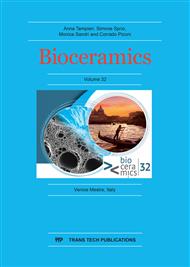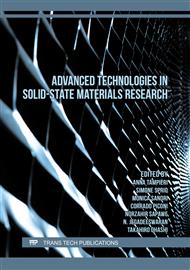p.53
p.61
p.69
p.79
p.89
p.95
p.103
p.109
p.115
Calcium Phosphate Nanoparticles as Carriers of Therapeutic Peptides
Abstract:
Calcium phosphate is a natural biomineral and the major inorganic constituent of bones and teeth. Therefore, synthetic calcium phosphates that mimic the biogenic ones possess excellent biocompatibility as well as biodegradability and are promising materials for medicine. Due to their unique physiochemical properties, calcium phosphate nanoparticles (CaP NPs) are extensively exploited in nanomedicine as carriers of biomolecules, including peptides, proteins, and nucleic acids. In this regard, peptides are of particular interest as they are exceptionally selective and efficacious for the treatment of a broad range of diseases. Among various peptides for biomedical applications, cardio-specific peptides are particularly interesting since they represent a valuable alternative to conventional treatments. Moreover, they can contribute to overcome important clinical limitations, including drug resistance and non-specific biodistribution of traditional drug products. In this work, we have investigated the loading of a therapeutic mimetic peptide, which was previously shown to improve myocardial contraction and results in the restoration of cardiac function. Peptide-loaded CaP NPs were prepared by exploiting a biomineralization approach, by using a mineralizing solution containing Ca2+, Mg2+, and PO43- ions. Several experimental conditions were tested by varying the reaction time, as well as the drug concentration. Colloidal stability, morphology, size, as well as drug loading were evaluated to identify the best candidate to be tested in vitro in the future.
Info:
Periodical:
Pages:
89-94
Citation:
Online since:
December 2022
Price:
Сopyright:
© 2022 Trans Tech Publications Ltd. All Rights Reserved
Share:
Citation:



